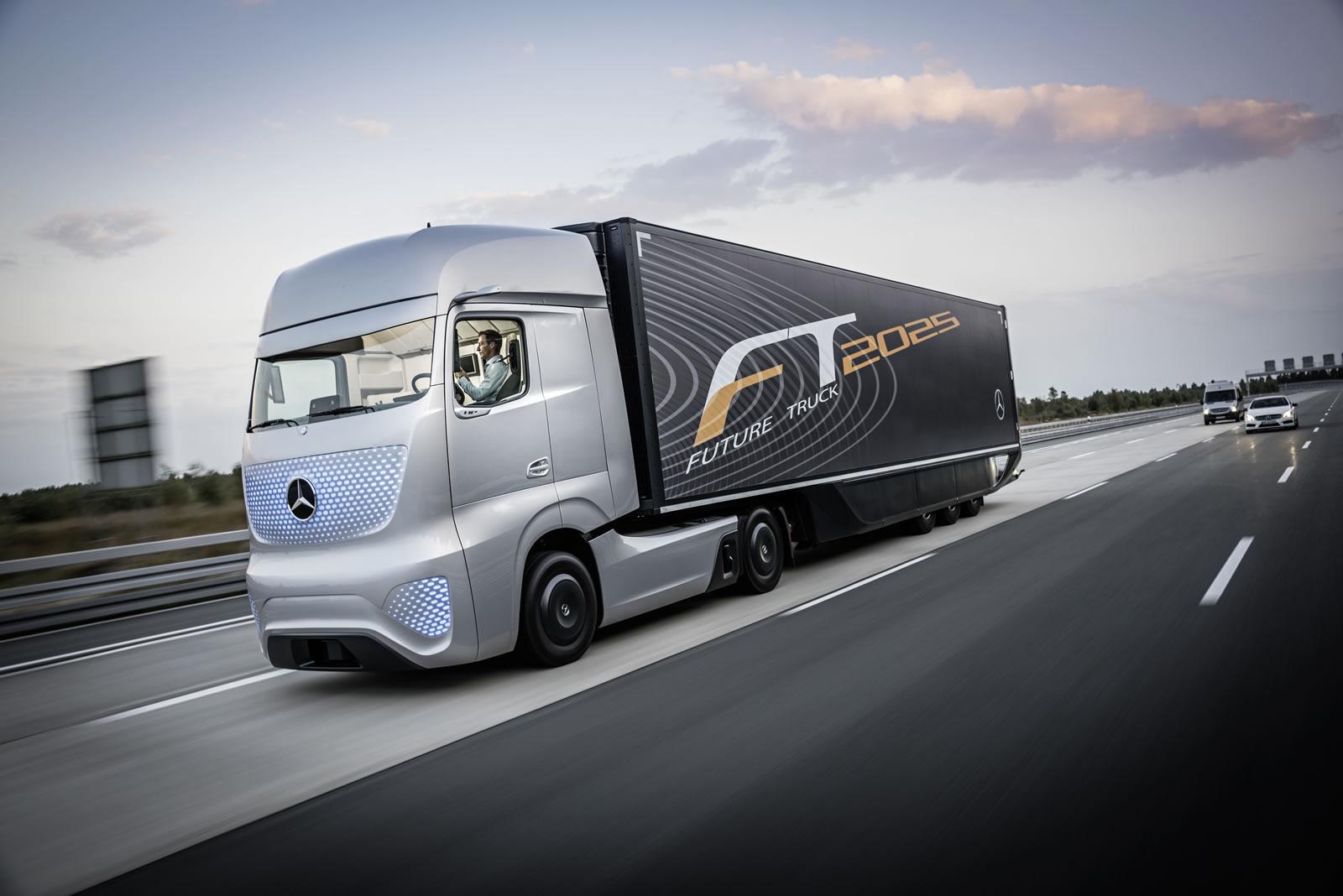Future Truck Drives Autonomously, Makes Driverless Trip
TuSimple has announced that it successfully completed the world’s first fully autonomous CMV run on open public roads without a human at the helm.
The trip took place in Arizona Dec. 22, 2021. The autonomous semi-truck left from a large railyard in Tucson traveling to a high-volume distribution center in the Phoenix metro area. It traveled over 80 miles on surface streets and highways at night (probably for safety concerns). The company says its truck “successfully navigated surface streets, traffic signals, on-ramps, off-ramps, emergency lane vehicles, and highway lane changes in open traffic while naturally interacting with other motorists.”
A Technical Milestone for Autonomous Vehicles
TuSimple said the trip took approx. one-hour and 20-minutes drive is the first time a class 8 autonomous truck has operated on open public roads without a human in the vehicle and without human intervention. TuSimple has said that the test was performed in close collaboration with the Arizona Department of Transportation and local law enforcement agencies.
“By achieving this momentous technical milestone, we demonstrated the advanced capabilities of TuSimple’s autonomous driving system and the commercial maturity of our testing process, prioritizing safety and collaboration every step of the way,” said Cheng Lu, president, and CEO, of TuSimple. “This year, we were laser-focused on putting our technology through a rigorous test on open public roads under real-world conditions, and to see all our hard work and dedication come together is extremely rewarding.”
To ensure public safety, TuSimple said it worked closely with government regulators and law enforcement and had a TuSimple survey vehicle to look for anomalies operating over five miles ahead, as well as an oversight vehicle capable of putting the autonomous truck in a minimal risk condition trailing closely behind. They also had law enforcement vehicles following at a distance of about half a miles as an extra level of safety for the test. The company said this test was “a critical first step in scaling autonomous trucking operations on the TuSimple Autonomous Freight Network.”
Are There Already Autonomous Trucks on the Road?
If you want to get technical, there are a few autonomous trucks already on our roads, but these are typically accompanied by drivers. We are still far away from driving down the freeway with fully autonomous vehicles. The term, “fully-autonomous”, refers to a fully driverless vehicle capable of operating with zero human intervention. The path to this revolutionary state will take time and extensive innovation.
What States Currently Allow Autonomous Trucks?
As the technology for autonomous vehicles continues to develop, it may be necessary for state and municipal governments to address the potential impacts of these vehicles on the road. Each year, the number of states considering legislation related to autonomous vehicles has gradually increased.
- In 2019, the Office of Administrative Law approved revised regulations allowing for the testing and deployment of autonomous motor trucks (delivery vehicles) weighing less than 10,001 pounds on California’s public roads (with an approved permit from DMV).
- In 2018, 15 states enacted 18 AV related bills.
- In 2017, 33 states have introduced legislation. In 2016, 20 states introduced legislation.
- Sixteen states introduced legislation in 2015, up from 12 states in 2014, nine states and D.C. in 2013, and six states in 2012.
- Since 2012, at least 41 states and D.C. have considered legislation related to autonomous vehicles.
- Twenty-nine states—Alabama, Arkansas, California, Colorado, Connecticut, Florida, Georgia, Illinois, Indiana, Kentucky, Louisiana, Maine, Michigan, Mississippi, Nebraska, New York, Nevada, North Carolina, North Dakota, Oregon, Pennsylvania, South Carolina, Tennessee, Texas, Utah, Virginia, Vermont, Washington and Wisconsin —and Washington D.C. have enacted legislation related to autonomous vehicles.
- Governors in Arizona, Delaware, Hawaii, Idaho, Illinois, Maine, Massachusetts, Minnesota, Ohio, Washington and Wisconsin have issued executive orders related to autonomous vehicles.
Levels of Trucking Autonomy
As more sophisticated CMV technology continue to disrupt the trucking and transportation industries, the opportunities for automated freight options range widely, from providing driver assistance and guidance systems to complete autonomy with no zero intervention. These abilities can be divided into five different levels.
Level 5 – Full Automation: Automation handles all roadway conditions and environments without a driver
Level 4 – High Automation: All tasks are automated in limited environments with a driver present
Level 3 – Conditional Automation: All tasks are automated in some situations (i.e. highway driving, or parking)
Level 2 – Partial Automation: Ability to control steering and acceleration / deceleration
Level 1 – Driver Assistance: Ability to control one function automatically, either steering or acceleration / deceleration
National Standards For Autonomous Trucking
Currently, there is no national standard. Every State uses a different approach when it comes to autonomous trucking. Several states have no proposed legislation, meanwhile states like Nevada, California, Texas, and Arizona are hotspots for testing and prototyping of automated vehicles.
On the opposite end of the spectrum, there are restrictive policies currently in place in certain states and the absence of federal policy has slowed the pace of development and implementation operationally. Some form of Level 1 and 2 technology are already being utilized by commercial trucks, but still the advancement of vehicles to higher levels of automation is slow. As more States enact legislation that allows automated trucking testing, the solution becomes more practical and adaptable.
What Can We Expect for the Future of Trucking?
The general attitude toward autonomous vehicles as a whole remain in flux, regardless autonomous trucking will play a massive role in the future of the transportation industry. Those who adopt the technology early are working towards increasing safety, efficiency, and sustainability. Drivers and fleet operators should stay informed to new emerging technology, open to changes, and taking an active role in the policies. This technology puts shippers in an advantageous position, as getting in front of these changes allows for more agile supply chains.
Image source: Daimler
Related Articles:


